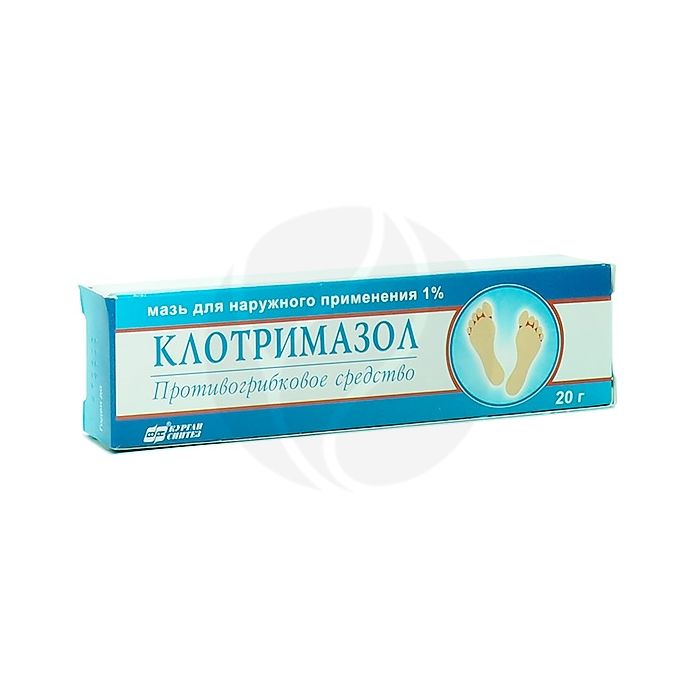Clotrimazole ointment 1%, 15 g
Expiration Date: 05/2027
Russian Pharmacy name:
Клотримазол мазь 1%, 15 г
Fungal diseases of the skin, mycoses of skin folds, feet;
pityriasis versicolor, erythrasma, superficial candidiasis caused by dermatophytes, yeasts (including the genus Candida), molds and other fungi and pathogens sensitive to clotrimazole;
mycoses complicated by secondary pyoderma.
Outwardly. The ointment is applied in a thin layer 2-3 times a day on previously cleaned (using soap with a neutral pH value) and dry affected skin areas and rubbed gently.
The duration of treatment depends on the severity of the disease, the localization of pathological changes and the effectiveness of therapy.
Treatment of dermatomycosis is carried out for at least 4 weeks, pityriasis versicolor - 1-3 weeks.
In case of fungal diseases of the skin of the legs, therapy is recommended to continue for at least 2 weeks after the symptoms of the disease have been eliminated.
Ointment for external use 1% white or almost white, homogeneous.
1 g
clotrimazole 10 mg
Excipients: propylene glycol, polyethylene oxide 1500, polyethylene oxide 400, nipagin (methyl parahydroxybenzoate) or methyl paraben.
Hypersensitivity to clotrimazole or excipients;
I trimester of pregnancy.
With care: lactation period.
pharmachologic effect
Antifungal agent of the group of imidazole derivatives for topical use. It acts by disrupting the synthesis of ergosterol, which is an integral part of the cell membrane of fungi. Possesses a wide spectrum of action. Active against dermatophytes, molds, fungi of the genus Candida, Malassezia furfur. Clotrimazole is also active against Corynebacterium minutissimum, Streptococcus spp., Staphylococcus spp., Trichomonas vaginalis.
Pharmacokinetics
When applied externally, clotrimazole penetrates well into various layers of the skin, reaching therapeutic concentrations. When applied topically, a small amount of clotrimazole is absorbed into the bloodstream.
Side effect
Local reactions: contact allergic dermatitis, redness, burning sensation.
Application during pregnancy and lactation
Contraindicated in the first trimester of pregnancy. In experimental studies, it was found that when used in high doses, clotrimazole has an embryotoxic effect. It is not known whether clotrimazole is excreted in breast milk. Although clotrimazole is not contraindicated during pregnancy and lactation, the potential risk should be considered when choosing antifungal therapy.
special instructions
Dosage forms intended for intravaginal use are not used during menstruation. To prevent reinfection, simultaneous treatment of sexual partners is necessary. Clotrimazole is not recommended for use in ophthalmology.
Drug interactions
With simultaneous use with amphotericin B, nystatin, the activity of clotrimazole decreases.

